Whether you’ve taken ownership of a new garden or allotment, or you’ve neglected part of your garden and have knee-high brambles that you need to get rid of, you might be wondering whether your lawn mower can be used for mowing weeds.
Here, we’ve answered the common question: “Does a lawn mower cut weeds?” We’ve also shared our top tips for mowing weeds, and which factors affect a lawn mower’s ability to cut weeds.
✅Key Takeaways:
You can use a lawn mower to cut weeds, but mowing a thick patch of weeds may damage or clog the mower blades and cause the motor to overheat.
Factors affecting a lawn mower’s ability to mow weeds include the weed species, the mower power, and the weed density and height.
Mowing shouldn’t spread weeds as long as you bag the weeds rather than discharging them onto your lawn.
Table of Contents
☘️✂️ Can You Cut Weeds With A Lawn Mower?
Yes, you can cut weeds with a lawn mower. However, the effectiveness of your lawn mower’s ability to mow weeds depends on a few factors, including the density and height of the weeds, the weed species, your mower’s power type and blade sharpness, and more.
Keep in mind that mowing weeds won’t eliminate the problem. It’s an easy way to clear a weed-ridden space, but mowing isn’t a method of weed control because it doesn’t remove the weeds at the roots. For that reason, we recommend mowing the weeds down to make them more manageable, then putting on a pair of protective gloves and ripping the weeds out of your lawn so they don’t come back.
We should also add that most lawn mower manufacturers advise against using a lawn mower to mow weeds. Mowing weeds puts a lot of strain on your lawn mower and may cause the motor or engine to burn out. So, if you value your mower, using it to cut weeds is risky business.
📋 What Types Of Weeds Can You Mow?
You can mow most types of weeds with a lawn mower, including broadleaf weeds, grassy weeds, and nettles.
Most weeds are easy to cut through, like grass. Thicker nettles and brambles are more difficult to mow because they’re more rigid and may clog your lawn mower’s blades.
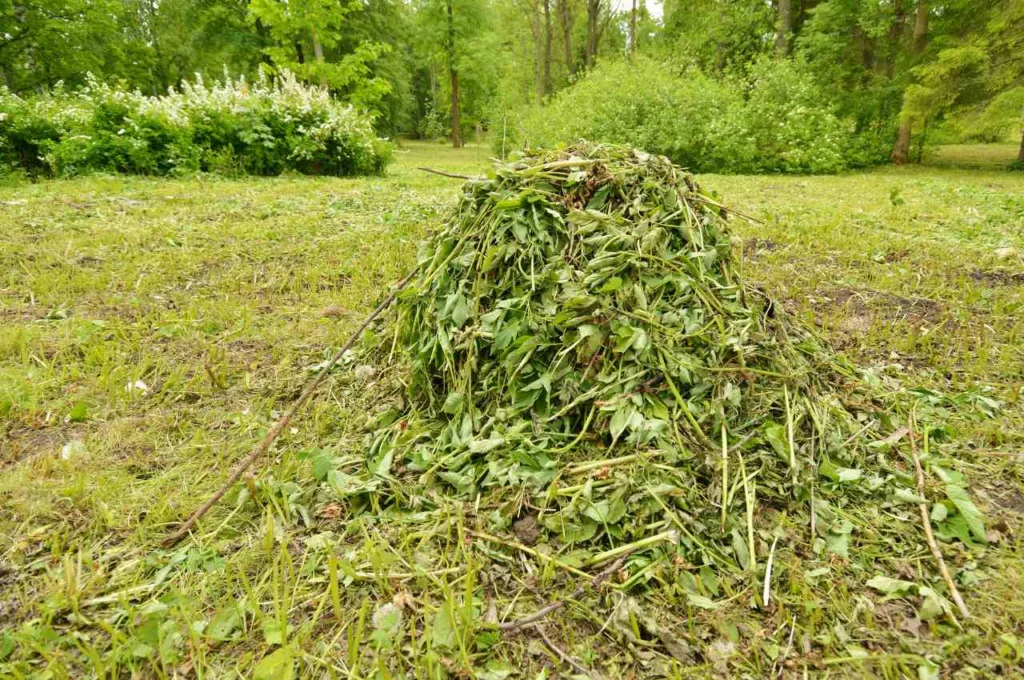
📑 Factors Affecting A Lawn Mower’s Ability To Mow Weeds
Let’s take a look at the factors that affect a lawn mower’s ability to cut weeds.
📏 Weed Density And Height
One of the biggest factors that will affect your ability to mow through weeds is the density and height of the weeds you’re dealing with.
Thick, dense weed growth will create more resistance as you mow, so you’ll need to put more effort into pushing the mower back and forth. Dense weeds are also more likely to clog your mower blades, further complicating the process.
Tall weeds are similarly more difficult to mow than shorter weeds because there’s more of the weed to cut through, and you’ll find it difficult to physically walk through the weedy area.
🍀 Weed Species
The type of weed you’re mowing will also determine your lawn mowing capabilities.
Some weeds are easier to mow than others. Weed grasses and broadleaf weeds (like dandelions, chickweed, buttercups, and clover) are easy to mow because they have thinner stems and leaves that are easy to cut through. However, some of these weeds hug the ground as they grow, which means you may simply mow right over them without cutting them down.
Other weeds, like nettles and brambles, grow thickly, especially if they’re left to grow over time. Mowing a tangled mass of brambles is significantly more difficult than mowing broadleaf weeds. Not only do you have the resistance of the thick, clustered branches, but you also have to avoid getting scratched or stung as you’re mowing.
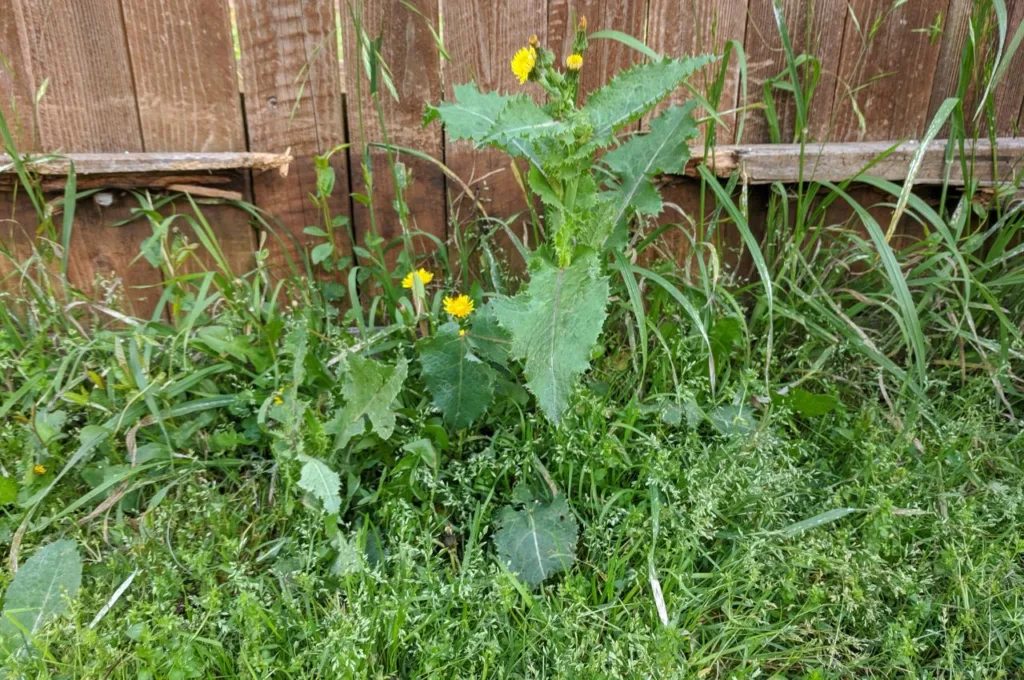
✂️ Mower Blade Sharpness
The sharpness of your mower blade affects its ability to cut through thicker weeds and long grass.
The sharper your mower’s blade, the more easily it’ll slice through weeds. This should shave time off your mowing job and reduce the likelihood of clogging underneath the mower deck.
It’s a good idea to sharpen your mower blades before tackling a patch of weeds to make the job quicker and easier.
📐 Mower’s Max. Cut Height
Your lawn mower’s maximum cutting height versus the height of the weeds you’re cutting will affect its ability to cut them down.
Let’s say you have very tall weeds (knee length or higher). The higher your mower’s maximum cutting height – i.e. the higher the blade is off the ground – the better. It’ll create more space beneath the mower deck to cut weeds as you push the mower forward through a weedy patch.
Most lawn mowers have a cut height range of 20-25mm to 70-80mm. Make sure your mower’s cut height is as high as it’ll go when mowing taller grass and weeds.
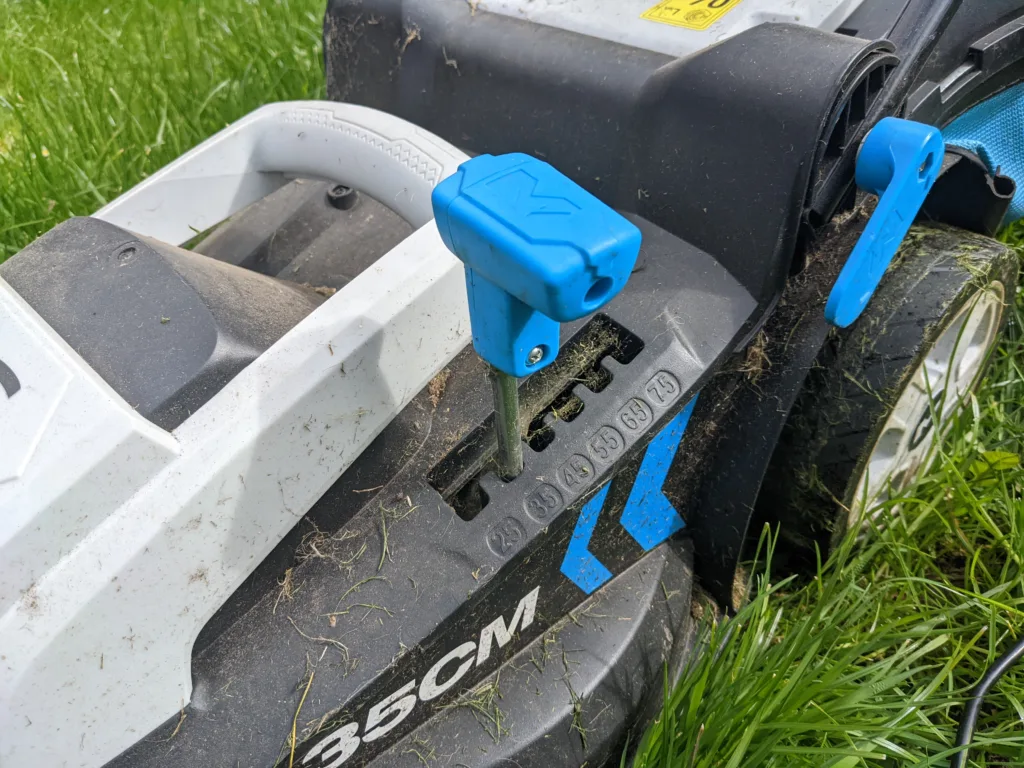
👍 Mower Power
Your mower’s power source will determine the capability of its blades to cut through thick weeds.
Petrol mowers have the most powerful engines and can usually cut through thicker, denser terrain without wearing out the engine or clogging the blades.
A corded electric mower is less powerful, but should still deliver enough power to the motor to effectively cut through weeds, even if you may occasionally need to stop the mower to remove tangled weeds from the blades.
We don’t recommend using battery-powered mowers for cutting through weeds. These mowers have a weaker power source – a built-in battery – and they often have less powerful motors in order to conserve power and extend their run time. A cordless mower’s motor could burn out as a result of mowing a thick patch of weeds.
🤔 How To Mow Tall Grass And Weeds: Top 6 Tips
What are the proper mowing practices when mowing weeds? We’ve shared our top 6 tips below.
🧐 Inspect The Area
If you’re mowing a patch of tall weeds, you can’t be certain what might be lurking underneath.
Before you start mowing, inspect the area to check there are no hidden objects or wildlife that could damage or be damaged by the mower. This is especially important if you’re not familiar with the land you’re cutting (i.e. if you’ve just moved onto a new property with an overgrown lawn or taken on an overgrown allotment patch).
✂️ Sharpen Your Mower Blades
Sharp mower blades will cut through thick weeds much better than dull blades. So, sharpen your blades specially for the task at hand.
To sharpen a mower’s blade, you’ll need a special sharpening tool. We use the SHARPAL 103N All-in-1 Knife and Garden Tool Blade Sharpener because it’s pretty cheap but makes easy work of sharpening mower blades, and can also be used for other purposes (sharpening shears, secateurs, kitchen knives, etc.).
Find out the 5 steps to sharpen your lawn mower blades in this easy lawn mower blade sharpening guide.
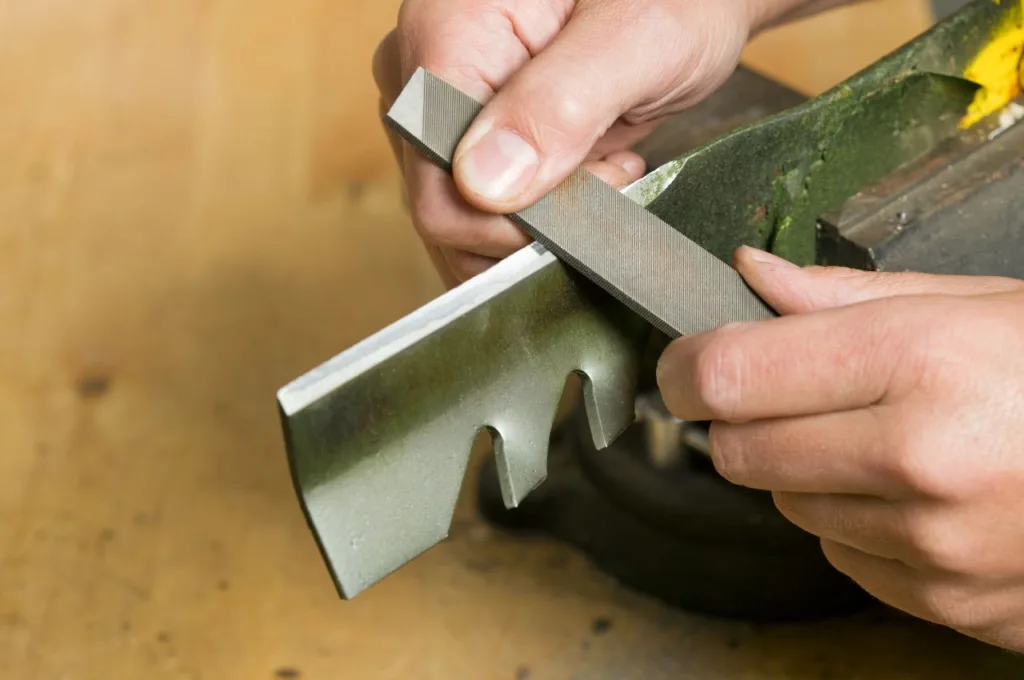
🧰 Adjust Your Cut Height
Increasing your cut height helps you to more easily mow over tall weeds. But mowing on a lower cut height has its benefits in some scenarios – you’ll be able to cut the weeds down to a lower height, so there’s less of the weed stem and foliage for you to remove after.
Only mow on a very low setting if you’re dealing with a patch of weed growth that needs dedicated attention. If you’re just mowing weedy grass, setting your cut height too low will scalp the grass (when you cut too much off the grass leaf), causing it to turn brown and making your lawn look even less desirable.
🔃 Cut The Area In Two Passes
The best way to tackle a particularly dense patch of weeds is to mow the area in two passes.
Start by mowing on a high blade setting, then do another pass on a low setting. This allows you to effectively cut down the weeds with a reduced likelihood of clogging, then cut them down even lower once the main bulk of the weeds have been tackled.
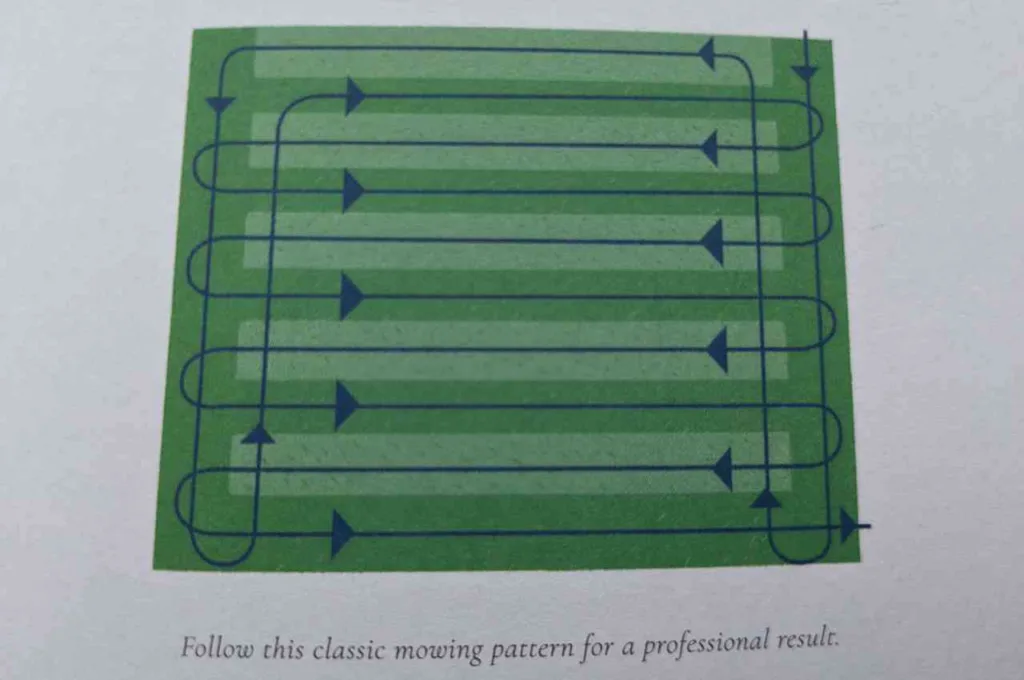
🛵 Go Slowly
Again, if you’re dealing with tall or dense weeds, we advise using slow and deliberate passes, which allows the mower blades to make cleaner cuts. Going slowly also gives you more control over your mowing and means you can stop if you notice something that needs your attention (like a giant rock hidden beneath the weeds).
We also recommend overlapping your mowing paths, which will help you to comprehensively cover the weedy area and avoid missed spots.
🛍️ Bag The Weeds
You might think that mowing using side or rear discharge is easier when cutting down weeds. But doing so may spread weeds to other parts of your garden because you’re more likely to disperse weed seeds within the area.
If your ultimate goal is to achieve a weed-free lawn, collect the weeds in your mower’s grass box or bag as you mow. Make sure to empty out the grass collector as often as needed – it’ll get filled quickly if you have a big weedy area to tackle, so you’re going to need plenty of patience.
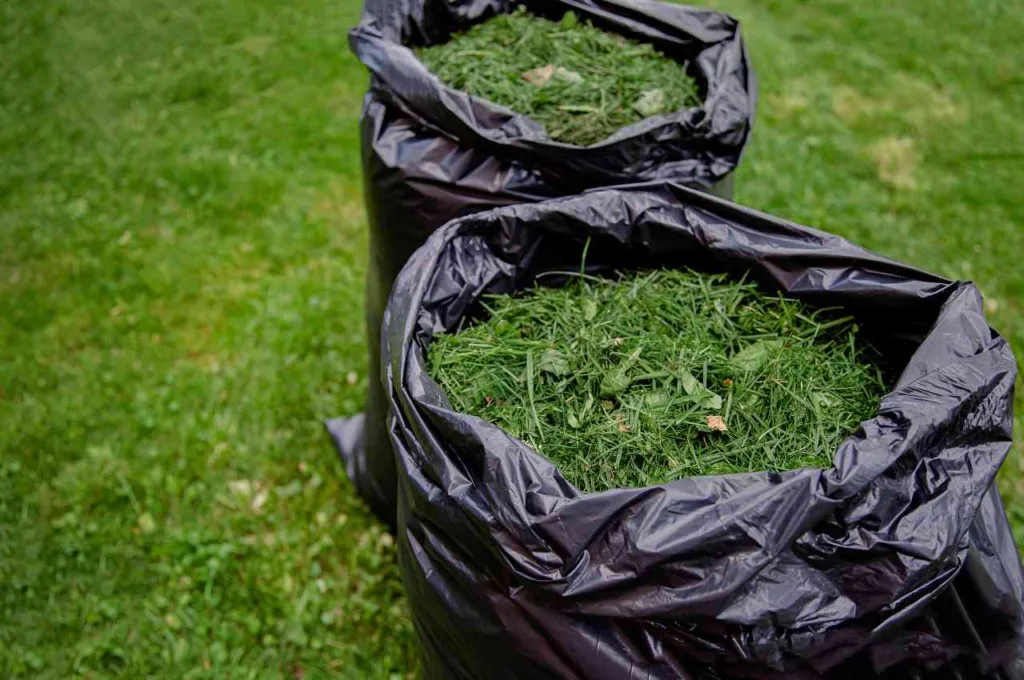
🌴 How Tall Can Weeds Be For Mowing?
The best, most powerful mowers are pretty capable of cutting through even tall grass and weeds, but there’s still a height limit that you should be aware of.
Don’t try to mow a patch of weeds that are taller than 60cm (just below knee height). Mowing weeds this tall increases your mower’s likelihood of clogging and overheating.
If you do have weeds taller than 60cm, trim them with a strimmer first to reduce the strain on the mower.
☠️ Should You Kill Weeds Before Mowing?
If you want to eliminate unwanted weeds and prevent the spreading of weeds in your lawn, it’s a good idea to kill the patch of weeds around 3-5 days before you plan to mow.
That means you’re less likely to spread weeds as you mow because the weeds will be dead. The dead weeds should be shrivelled and dried out, making them easier to remove with mowing.
We recommend Roundup Fast Action Weedkiller because it’s highly effective in killing weeds within a matter of days.
Note: an effective weedkiller will kill everything that grows, including grass. If you have a bad patch of weeds in your garden, a weedkiller is the quickest way to address them. But if you just want to control weeds here and there on your lawn, you’re best pulling weeds out by hand to avoid killing any grass in the area.
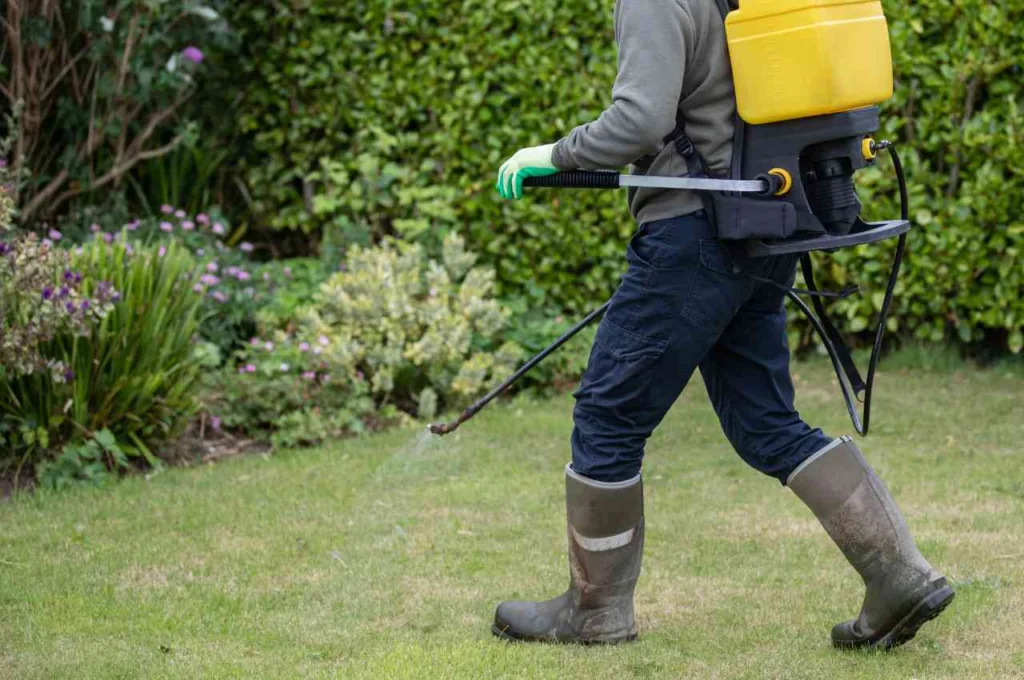
🌾 Does A Lawn Mower Spread Weeds?
So, does mowing weeds spread them?
Generally, frequent mowing helps control weeds in a healthy lawn. It keeps the grass healthy and encourages it to grow. Since grass and weeds compete for space on your lawn, healthy grass growth will reduce weed growth and acts as a natural weed control method.
But if you mow using your mower’s mulching function and you have a weed issue in any part of your lawn, you risk spreading weeds to other parts of your lawn in the mulch. Or, if you bag your grass clippings but don’t mow regularly, your lawn grass won’t grow as quickly, giving weeds more of an opportunity to grow.
That’s why it’s best to mow regularly and collect the weeds with your grass clippings if you’re trying to achieve a weed-free lawn.
🌱 Is It Better To Pull Or Mow Weeds?
It’s better to pull weeds in your lawn if you just have a few here and there, but it’s quicker and easier to mow weeds down if you have a big patch of weed overgrowth (like nettles or brambles).
Ultimately, even after mowing the weeds down, you will need to pull them out of the ground to prevent them from simply growing back.
So, pulling weeds is the only effective method of weed control, but mowing weeds helps you save a lot of time by reducing the weed stems and foilage that you need to deal with.
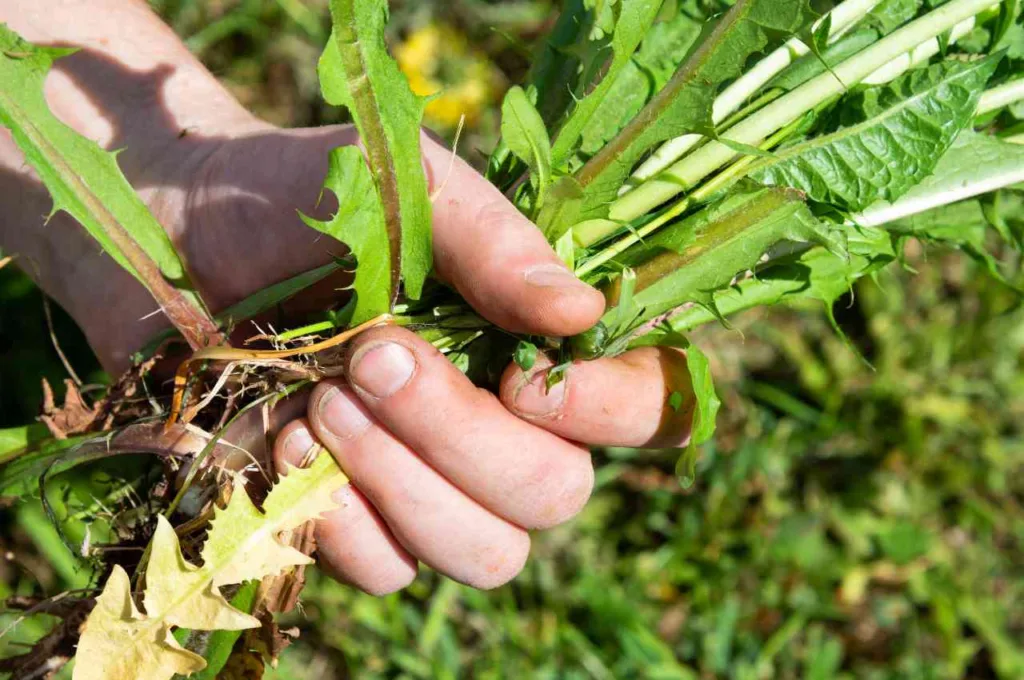
🆓 How To Keep Your Lawn Weed-Free
The best way to keep your lawn weed-free is to regularly mow your grass, using the one-third rule to prevent scalping your grass, and adopt a consistent lawn maintenance schedule to encourage healthy grass growth. If you notice any weeds, pull them out by hand, making sure to remove the roots to prevent them from growing back.
You can use a seasonal lawn feed to strengthen your grass roots and speed up their growth rate, helping to choke out existing weeds. Check out our guide to the best lawn feed for UK gardens if you’re on the market for some fertiliser.
🏁 Final Word
Ultimately, you can mow weeds with a lawn mower. But keep in mind that regularly mowing thick, dense patches of tough weeds will scratch and damage your lawn mower and make the blades blunt.
Proceed with caution – and avoid using an expensive lawn mower for the task! If you regularly need to mow through weeds, or you have a big plot to go through, consider buying a cheaper mower within the £100 range that you won’t feel too upset about damaging.
Also remember that mowing weeds in your lawn isn’t a method of permanent weed control. You’ll need to pull the weeds out at the root to prevent them from returning.
If you like this article, you might also like our guide on how to safely kill weeds on your lawn.
